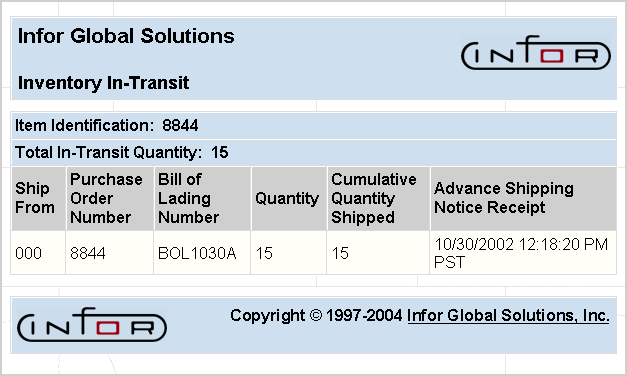
Revenue recognition is a fundamental aspect of accounting that directly impacts a company’s financial health and reporting accuracy. The timing and method of recognizing revenue can vary significantly depending on the terms of the sale and the nature of the goods in transit. For instance, under FOB Shipping Point terms, sellers can recognize revenue as soon as the goods leave their premises. This early recognition can be advantageous for companies looking to boost their financial performance within a specific reporting period. However, it also requires meticulous documentation to ensure that the transfer of ownership is clearly established at the point of shipment. Understanding the different types of goods in transit is essential for accurate accounting and financial reporting.
Strategies for Effective Transit Inventory Management:
When a title passes, the seller recognizes the sale and the buyer recognizes the purchase; alongside this, the inventory is included in the buyer’s ending inventory. The purchaser records the payable or the payment of cash and the purchase and includes the item in the ending the difference between assets and liabilities inventory. Goods in transit basically specify when the title of ownership and risk passes from the seller to the buyer. In case the purchaser is answerable for it, at that point he should assess the expense to make accrue costs as a component of the goods in transit.
Latest tips to improve Aussie ecommerce logistics
As most of your purchases will probably fall under FOB shipping point, it’s a good idea to take a look at your small business’s insurance plan and consider adding transit coverage. This coverage should be included under inventory coverage and will protect you from lost or damaged inventory. In this situation, goods in transit belong to the seller, and neither a sale nor a purchase is recorded until the goods reach the buyer. The Journal Entry in this respect will be recorded in buyer’s books of account on December 2, instead of November 28. The difference will arise in buyer’s and seller’s book due to shipment terms.
Manufacturer vs Retailer/Wholesaler Ownership
- If it takes an average of 2 weeks (14 days) to receive these items, the total shipment value will come out at $57.53.
- Using an ecommerce inventory management software makes it easy to keep track of all your shipments and in-transit inventory.
- Consignment sales introduce another layer of complexity to revenue recognition.
Assume the same scenario, but the terms of delivery are now FOB destination, and the shipment does not arrive at Aruba’s receiving dock until December 2. In this case, the same transactions occur, but on December 2 instead of November 28. Thus, under the FOB destination shipping scenario, ABC does not record a sale transaction until December. ABC International ships $10,000 of merchandise to Aruba Clothiers on November 28.

The point of transfer is when the goods reach the buyer’s place of business. In-transit inventory (also called pipeline inventory) consists of any goods you’ve purchased that have not yet arrived. Depending on your line of business, goods are shipped from a manufacturer to either a physical store, a distribution center, or an ecommerce facility like a third-party logistics provider. By implementing these strategies, businesses can effectively manage transit inventory, optimize supply chain operations, reduce costs, enhance customer satisfaction, and gain a competitive edge in the market. Transit inventory, which refers to goods in transit between the seller and the buyer, can have a significant impact on inventory management. It can lead to increased carrying costs, inaccurate inventory records, and reduced supply chain visibility.
Tracking and Visibility
Goods in transit should be accounted for similarly to what’s already on hand to provide a holistic picture of current inventory value. The goods in transit are the inventory of goods that have been shipped by the seller of the goods but have not yet reached the storage facility of the buyer. The goods in transit indicate that the goods are on their way to being delivered to the buyer. The main purpose of acknowledging the goods in transit is to identify the terms and conditions regarding when the ownership of the goods is transferred from the seller to the buyer. The goods in transit valuation include the cost of the goods and the shipping costs.
Insurance coverage is often influenced by who owns the inventory at a given point in the transit process. Regular audits of your product portfolio will help you identify which items will need to be culled (or given a new transport method) so that your financials remain healthy. Unfortunately, this means that the terms and conditions of many shipping policies can be outdated and even lead to lawsuits if an especially discerning customer decides to nit-pick. Often when a business is starting out the owner will rush to quickly get all the right policies in place in time for the official launch. This way, you can ensure accurate numbers and make better-informed decisions based on real historic data from all areas of your business.
FOB destination signifies that the manufacturer retains ownership of items in transit. The other type of inventory classification is “FOB destination,” in which ownership transfers to you when the items arrive. In this scenario, the seller owns (and is liable for) the in-transit goods until you receive them.
Now that we know how to conduct the goods in transit entry for both parties in the case of FOB destination and FOB shipping point let’s learn about how to make a valuation of the goods in transit. In the case of FOB destination, Company B will make a sales entry for the date of August 1st, 2022, which differs from the sales entry made by Company S (i.e. June 22nd, 2022). Check out The 14 Best Inventory Management Software for Small Businesses of 2022 on Business.org. If the inventory you’re waiting for is FOB destination, you won’t be able to account for it or offer it to buyers until it arrives at your service center.
